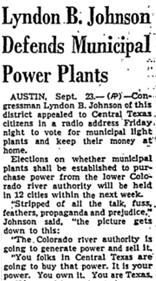
"Lyndon B. Johnson Defends Municipal Power Plants" - September 24, 1938, Houston Post

Born in the Hill Country town of Stonewall on August 27, 1908, Johnson grew up without electricity. He was shaped by the difficult Hill Country life and the experiences of his father, a former Texas legislator.
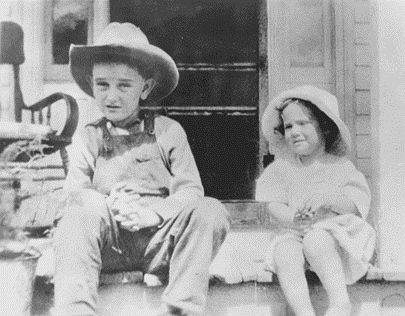
Young Lyndon Johnson - 1915, Johnson City Website
“We were completely cut off out here . . . everything had already happened before we found out about it.” - Lyndon Johnson
- The Politician: The Life and Times of Lyndon Johnson
In 1931, Johnson started working as an aide to Congressman Richard Kleberg and oversaw New Deal and LCRA projects. In 1937, Johnson got the chance to run for Congress when the incumbent in his own district died suddenly.
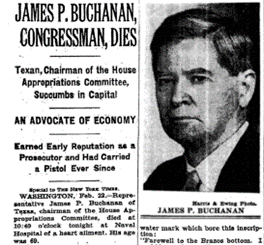
"James P. Buchanan, Congressman, Dies" - February 27, 1937, The New York Times
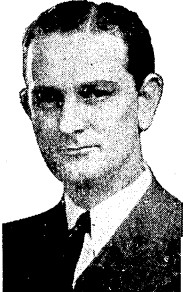
Lyndon Johnson - July 23, 1939, The Austin American Newspaper
Johnson campaigned on New Deal policies and electrification, telling Hill Country residents he would “see that they got electric light." [1] Ironically, the electrical frontier he tried to tame forced Johnson to campaign without extensive use of radio broadcasts.
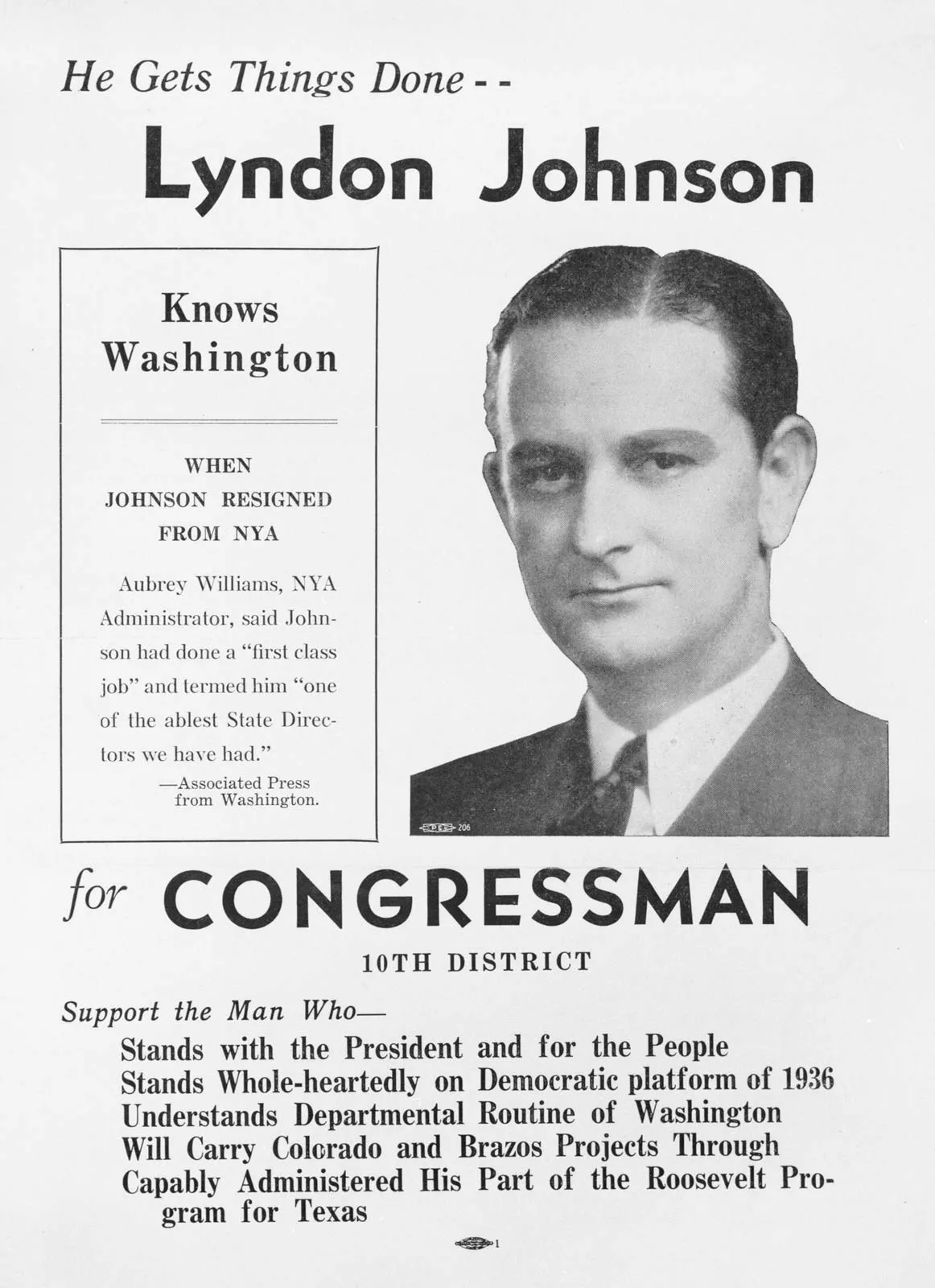
"Lyndon Johnson for Congressman" - 1937, Lyndon B. Johnson Presidential Library
Johnson won, giving him the opportunity to meet President Roosevelt during a subsequent Galveston visit. That meeting began a valuable friendship between the current and future presidents that became critical for Hill Country electrification.
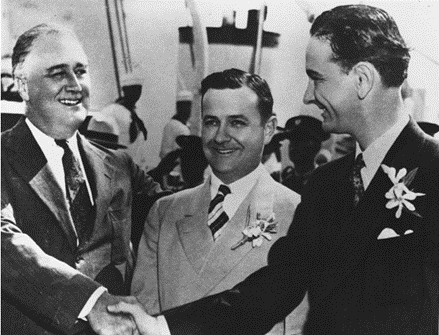
"The Galveston Handshake" - 1937, History Colored
Once in office, Johnson prioritized Hill Country electrification by seeking a REA density exception, creating a cooperative to eliminate TPLC’s monopoly, and stabilizing the LCRA’s power generation.
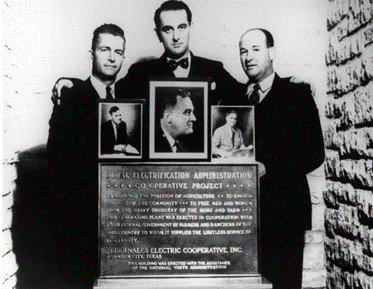
Johnson and PEC - 1939, Pedernales Electric Cooperative
First, Johnson and other Hill Country leaders created the Pedernales Electric Cooperative (PEC). Johnson then asked Roosevelt for an REA density exception in early 1938. However, Roosevelt was not convinced enough people would benefit and declined.

PEC's directors - 1938, Pedernales Electric Cooperative
Undeterred, Johnson and supporters canvassed the Hill Country to enlist future PEC customers for $5.00 pledges per family. While some residents appreciated electrification benefits, others lacked money or knowledge of those improvements.

"Lyndon B. Johnson Defends Municipal Power Plants" - September 24, 1938, Houston Post
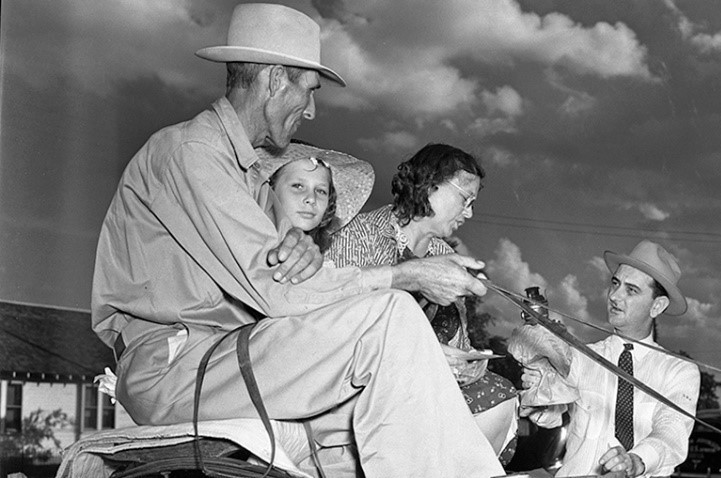
Johnson convincing residents - 1939, Pedernales Electric Cooperative
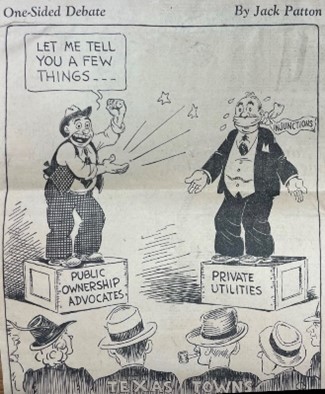
Electric cooperative cartoon - September 8, 1938, Lyndon B. Johnson Presidential Library
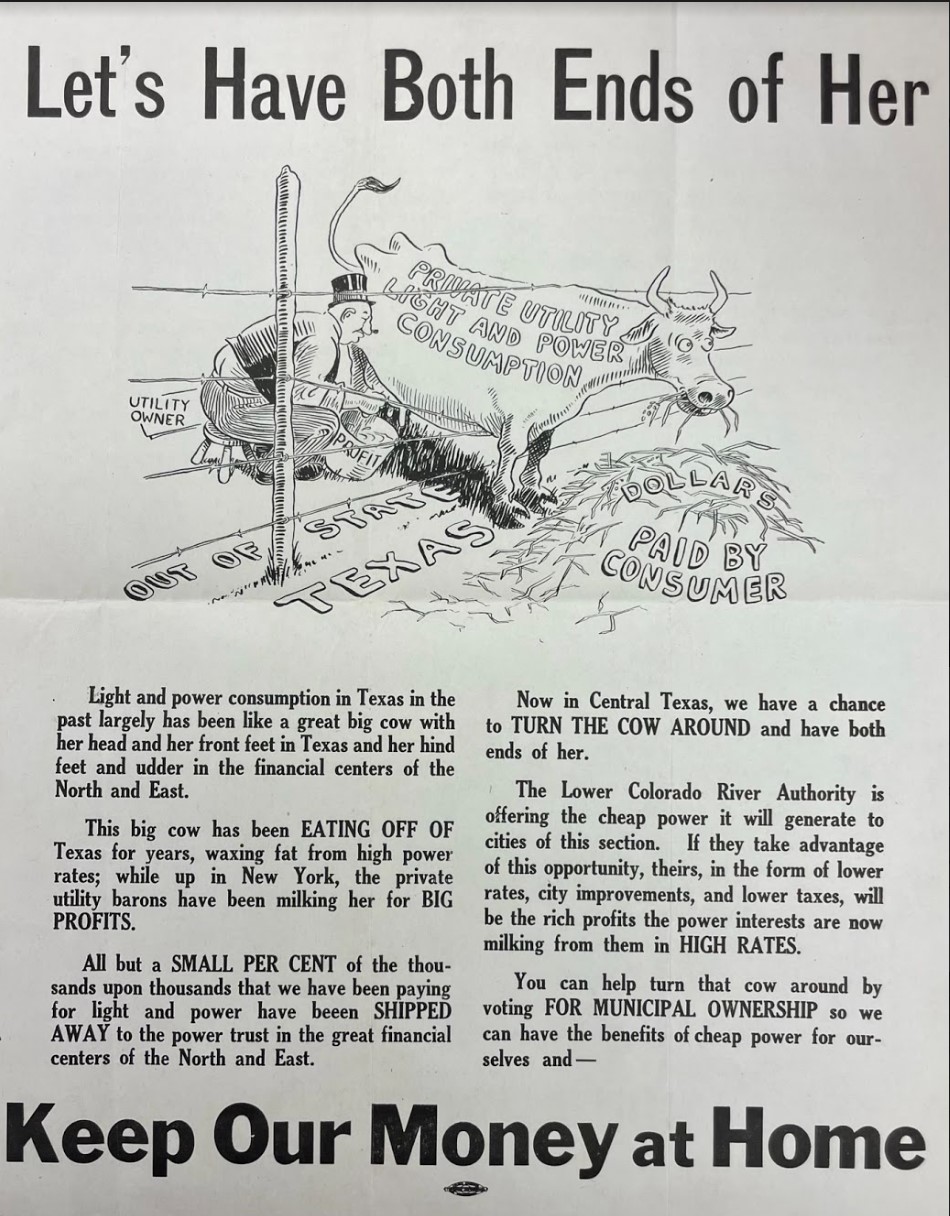
Electric cooperative cartoon - 1939, Lyndon B. Johnson Presidential Library
Eventually 4,000 families joined the PEC, giving Johnson the proof he needed to approach Roosevelt again in September 1938. This time, Roosevelt agreed to the first-ever REA density exception and instructed the REA to provide the PEC with a $1.3 million loan to build 1,830 miles of electrical lines—the largest loan and the most lines for a single U.S. cooperative.
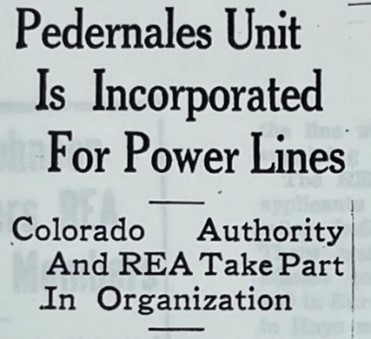
- July 21, 1939, Houston Chronicle
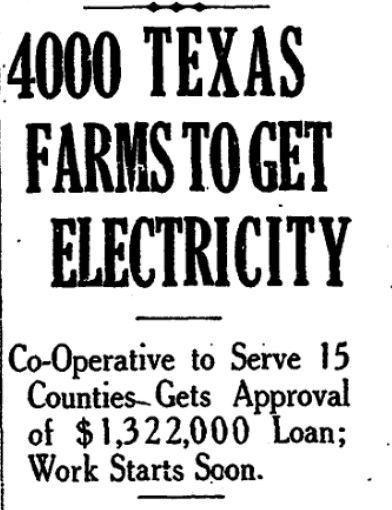
- September 28, 1938, Houston Chronicle

- April 27, 1939, Lyndon B. Johnson Presidential Library

- April 27, 1939, Lyndon B. Johnson Presidential Library
[1] - Pedernales Electric Cooperative website